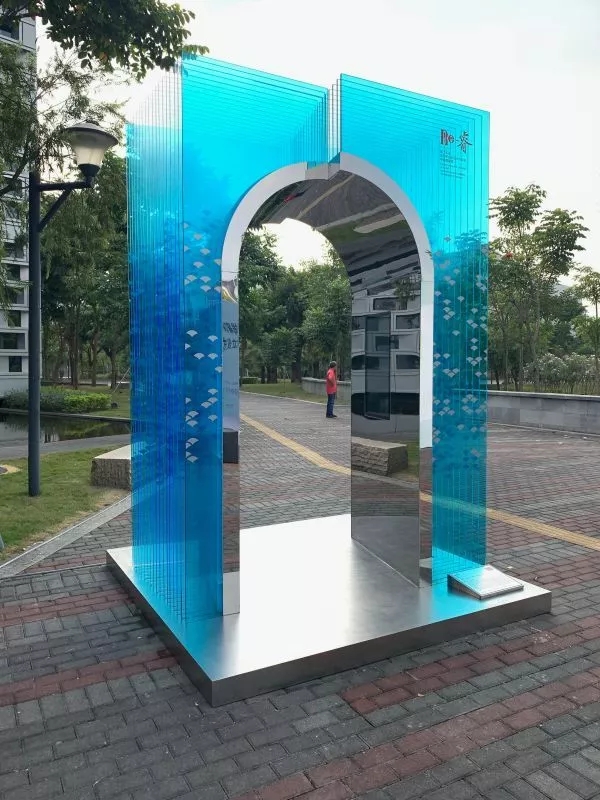Nan Ting, a solar-powered arch-like installation made from tempered glass by La Biennale di Venezia’s China Pavilion, has been unveiled at Southern University of Science and Technology (SUSTech) in Shenzhen, offering a unique way for visitors to learn about the ongoing La Biennale di Venezia in Italy.
“Nan” is the Chinese pinyin of “south,” and “ting” means “pavilion” in Chinese. Inside the minimalist and futuristic Nan Ting, there’s an interactive screen on which visitors can browse the information on the 58th La Biennale di Venezia, which opened in May in Venice and ends Nov. 24.
It is the third installation that the biennale’s China Pavilion has exhibited in China. The other two were installed at Ceramic Art Avenue Art Gallery in Jingdezhen and Humble Administrator’s Garden in Suzhou. Nan Ting will be displayed at SUSTech for a year.
“Contemporary art is the humanities discipline with the most imagination and creative thinking. The installation of Nan Ting will enhance the artistic atmosphere of SUSTech and promote the university’s humanities education,” said Ye Qin, general accountant of SUSTech and vice chairman of Southern University of Science and Technology Education Foundation (SUSTechEF).

“Nan Ting”
At the unveiling ceremony Nov. 2, the Artistic Committee of SUSTechEF was also launched, with Luan Qian (vice chairwoman of Shenzhen Art and Design Alliance), Wu Hongliang (curator of the 58th La Biennale di Venezia’s China Pavilion), artist Xiang Jing, architect Meng Yan, designer Han Jiaying, TV host Liu Fangfei and Tu Ronghui (chairman and secretary-general of SUSTechEF) as members.
“I believe the ultimate end of technology must be very artistic, so I hope this artistic committee will aggregate wisdom, art and funds to propel the fusion of art and technology, and guide the public to experience them,” said Wu.
The exhibition of the 58th La Biennale di Venezia’s China Pavilion is titled “Re-睿.” “Re” is a frequently applied prefix in the English language and “睿 (Rui)” indicates wisdom in Chinese. To create and evolve an experience field that could really evoke viewers to think, China Pavilion’s exhibition integrates artificial intelligence, new media, and the traditional logic of the Chinese art, intersects the parallel world, the virtual and reality, and hence creates a multidimensional experience beyond time and space.



